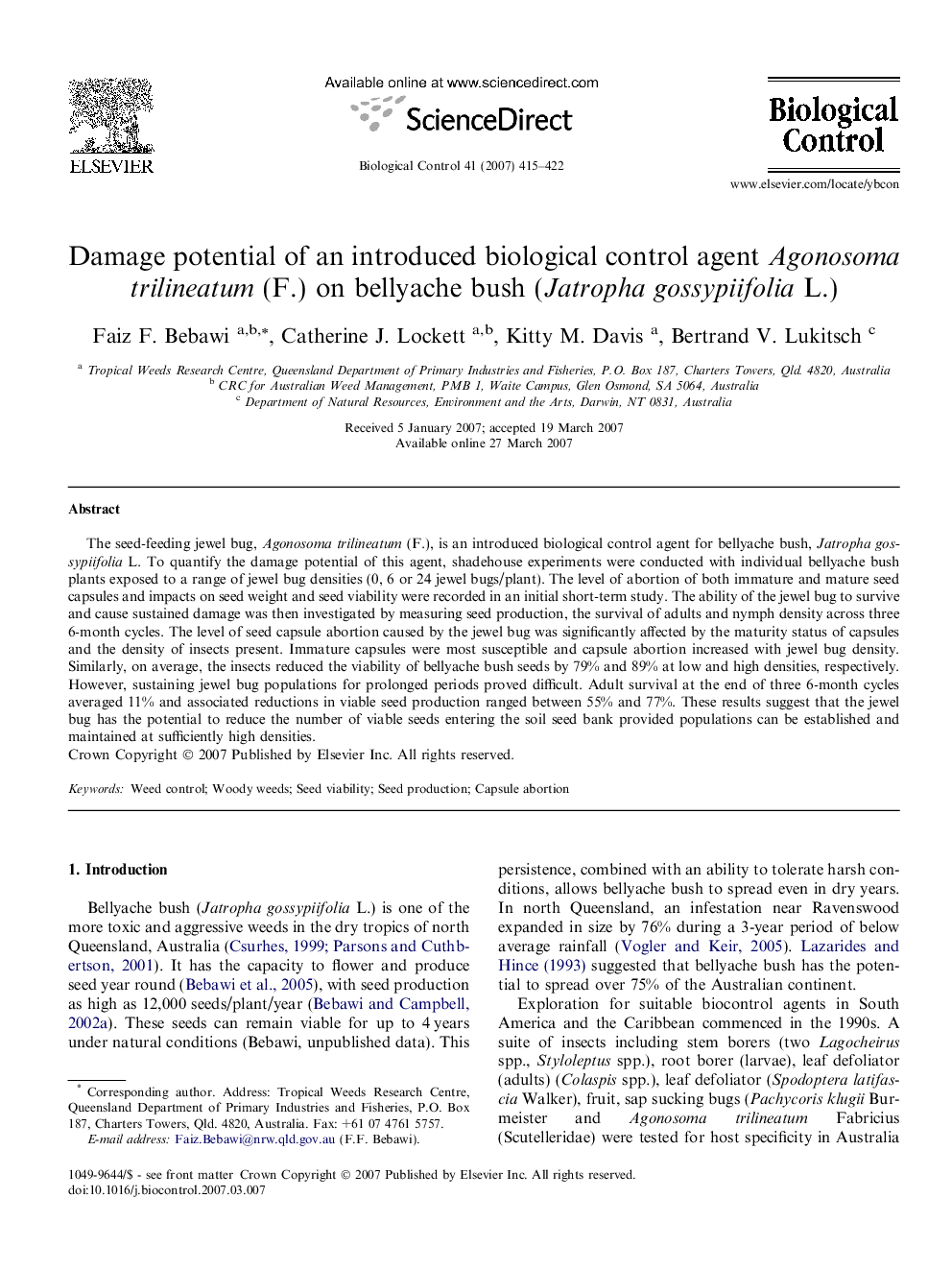| کد مقاله | کد نشریه | سال انتشار | مقاله انگلیسی | نسخه تمام متن |
|---|---|---|---|---|
| 4505162 | 1321130 | 2007 | 8 صفحه PDF | دانلود رایگان |
عنوان انگلیسی مقاله ISI
Damage potential of an introduced biological control agent Agonosoma trilineatum (F.) on bellyache bush (Jatropha gossypiifolia L.)
دانلود مقاله + سفارش ترجمه
دانلود مقاله ISI انگلیسی
رایگان برای ایرانیان
کلمات کلیدی
موضوعات مرتبط
علوم زیستی و بیوفناوری
علوم کشاورزی و بیولوژیک
علوم زراعت و اصلاح نباتات
پیش نمایش صفحه اول مقاله

چکیده انگلیسی
The seed-feeding jewel bug, Agonosoma trilineatum (F.), is an introduced biological control agent for bellyache bush, Jatropha gossypiifolia L. To quantify the damage potential of this agent, shadehouse experiments were conducted with individual bellyache bush plants exposed to a range of jewel bug densities (0, 6 or 24 jewel bugs/plant). The level of abortion of both immature and mature seed capsules and impacts on seed weight and seed viability were recorded in an initial short-term study. The ability of the jewel bug to survive and cause sustained damage was then investigated by measuring seed production, the survival of adults and nymph density across three 6-month cycles. The level of seed capsule abortion caused by the jewel bug was significantly affected by the maturity status of capsules and the density of insects present. Immature capsules were most susceptible and capsule abortion increased with jewel bug density. Similarly, on average, the insects reduced the viability of bellyache bush seeds by 79% and 89% at low and high densities, respectively. However, sustaining jewel bug populations for prolonged periods proved difficult. Adult survival at the end of three 6-month cycles averaged 11% and associated reductions in viable seed production ranged between 55% and 77%. These results suggest that the jewel bug has the potential to reduce the number of viable seeds entering the soil seed bank provided populations can be established and maintained at sufficiently high densities.
ناشر
Database: Elsevier - ScienceDirect (ساینس دایرکت)
Journal: Biological Control - Volume 41, Issue 3, June 2007, Pages 415-422
Journal: Biological Control - Volume 41, Issue 3, June 2007, Pages 415-422
نویسندگان
Faiz F. Bebawi, Catherine J. Lockett, Kitty M. Davis, Bertrand V. Lukitsch,